
As we look back at the many nanotechnology advances that occurred in 2022, we highlight the top 9 nanotechnology-related stories that generated the most impression on the NNI LinkedIn page. We also highlight the top 9 NNI podcast episodes that were downloaded the most in 2022.
TOP 9 POPULAR STORIES
In 2022, nanotechnology led the way for many scientific discoveries and advances that covered a range of topics, including new materials, nanomedicine, energy, and the environment. Throughout the year, the National Nanotechnology Coordination Office posted about these advances on our LinkedIn page, and its followers reacted to these stories by showing their enthusiasm for them or by reposting them. Below, we compiled a list of the top 9 stories with the most impressions on LinkedIn.
1) Long-hypothesized ‘next-generation wonder material’ created
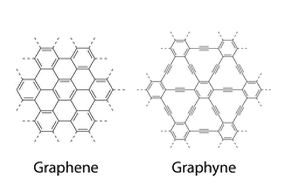 Scientists at the University of Colorado Boulder have successfully created graphyne, a material that could rival the conductivity of graphene. Graphene is composed of carbons in the form of a regular array of hexagons (benzene rings); graphyne is also composed of benzene rings, but they are connected with one another through acetylene bonds (instead of carbon bonds, as in graphene). The scientists were able to create graphyne by using an organic chemical reaction called alkyne metathesis, as well as thermodynamics and kinetic control. “There’s a pretty big difference (between graphene and graphyne) but in a good way,” said Wei Zhang, one of the scientists who led this study. “This could be the next-generation wonder material. That’s why people are very excited.” [Image Credit: Yiming Hu/University of Colorado Boulder]
Scientists at the University of Colorado Boulder have successfully created graphyne, a material that could rival the conductivity of graphene. Graphene is composed of carbons in the form of a regular array of hexagons (benzene rings); graphyne is also composed of benzene rings, but they are connected with one another through acetylene bonds (instead of carbon bonds, as in graphene). The scientists were able to create graphyne by using an organic chemical reaction called alkyne metathesis, as well as thermodynamics and kinetic control. “There’s a pretty big difference (between graphene and graphyne) but in a good way,” said Wei Zhang, one of the scientists who led this study. “This could be the next-generation wonder material. That’s why people are very excited.” [Image Credit: Yiming Hu/University of Colorado Boulder]
2) Lipid nanoparticles carry gene-editing cancer drugs past tumor defenses
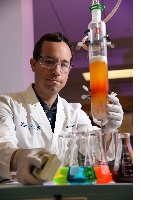 As they grow, solid tumors surround themselves with a thick, hard-to-penetrate wall of molecular defenses. Getting drugs past that barricade is notoriously difficult. Now, scientists from the University of Texas Southwestern Medical Center and the University of Texas at Arlington have developed lipid nanoparticles (LNPs) that can break down the physical barriers around solid tumors to reach cancer cells. Once inside, the nanoparticles released their payload: a gene editing system that alters DNA inside the tumor, blocking its growth, and activating the immune system. “After the worldwide success of the COVID-19 LNP vaccines, we are all wondering what else LNPs can do,” said Di Zhang, one of the researchers who conducted this study. “Here, we developed new LNPs capable of delivering multiple kinds of genetic drugs simultaneously to improve therapeutic outcomes in cancer. There is clearly great potential for LNP medicines to treat different kinds of diseases.” [Image Credit: UT Southwestern]
As they grow, solid tumors surround themselves with a thick, hard-to-penetrate wall of molecular defenses. Getting drugs past that barricade is notoriously difficult. Now, scientists from the University of Texas Southwestern Medical Center and the University of Texas at Arlington have developed lipid nanoparticles (LNPs) that can break down the physical barriers around solid tumors to reach cancer cells. Once inside, the nanoparticles released their payload: a gene editing system that alters DNA inside the tumor, blocking its growth, and activating the immune system. “After the worldwide success of the COVID-19 LNP vaccines, we are all wondering what else LNPs can do,” said Di Zhang, one of the researchers who conducted this study. “Here, we developed new LNPs capable of delivering multiple kinds of genetic drugs simultaneously to improve therapeutic outcomes in cancer. There is clearly great potential for LNP medicines to treat different kinds of diseases.” [Image Credit: UT Southwestern]
3) How do nanoparticles grow? Atomic-scale movie upends 100-year-old theory
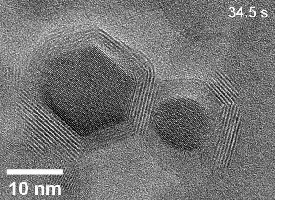 For decades, a textbook process known as "Ostwald ripening" has guided the design of new materials including nanoparticles. According to this theory, small particles dissolve and redeposit onto the surface of large particles, and the large particles continue to grow until all of the small particles have dissolved. But now, new video footage captured by scientists from the U.S. Department of Energy’s Lawrence Berkeley National Laboratory and Nanyang Technological University in Singapore reveals that nanoparticle growth is directed not by difference in size but by defects. “This is a huge milestone. We are rewriting textbook chemistry, and it’s very exciting,” said Haimei Zheng, one of the scientists who conducted this study. “I hope our work inspires others to think of new rules to design functional nanomaterials for new applications.” [Image Credit: Haimei Zheng/Berkeley Lab. Courtesy of Nature Communications]
For decades, a textbook process known as "Ostwald ripening" has guided the design of new materials including nanoparticles. According to this theory, small particles dissolve and redeposit onto the surface of large particles, and the large particles continue to grow until all of the small particles have dissolved. But now, new video footage captured by scientists from the U.S. Department of Energy’s Lawrence Berkeley National Laboratory and Nanyang Technological University in Singapore reveals that nanoparticle growth is directed not by difference in size but by defects. “This is a huge milestone. We are rewriting textbook chemistry, and it’s very exciting,” said Haimei Zheng, one of the scientists who conducted this study. “I hope our work inspires others to think of new rules to design functional nanomaterials for new applications.” [Image Credit: Haimei Zheng/Berkeley Lab. Courtesy of Nature Communications]
4) 2D interfaces in future transistors may not be as flat as previously thought
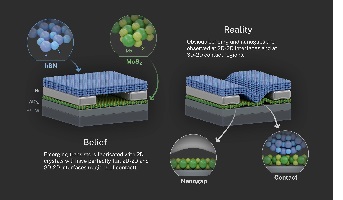 According to a team of scientists from the National Institute of Standards and Technology, Purdue University, Duke University, and North Carolina State University, 2D materials and their interfaces – which researchers intend to be flat when stacked on top of each other – may not, in fact, be flat. Potential benefits from this study include giving the scientific community more control over the fabrication of transistor devices that incorporate 2D materials. “A lack of understanding about 2D interface flatness is a major roadblock for improving devices based on 2D materials,” said Zhihui Cheng, the scientist who led this study. “We’ve put out a method to quantify flatness to angstrom resolution. This opens a lot of windows for people to explore the strain and interactions at the 2D interfaces.” [Image Credit: Sean Kelley/NIST]
According to a team of scientists from the National Institute of Standards and Technology, Purdue University, Duke University, and North Carolina State University, 2D materials and their interfaces – which researchers intend to be flat when stacked on top of each other – may not, in fact, be flat. Potential benefits from this study include giving the scientific community more control over the fabrication of transistor devices that incorporate 2D materials. “A lack of understanding about 2D interface flatness is a major roadblock for improving devices based on 2D materials,” said Zhihui Cheng, the scientist who led this study. “We’ve put out a method to quantify flatness to angstrom resolution. This opens a lot of windows for people to explore the strain and interactions at the 2D interfaces.” [Image Credit: Sean Kelley/NIST]
5) Disposable masks could be used to improve concrete
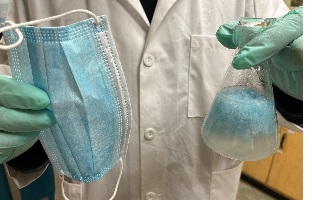 Researchers at Washington State University have demonstrated the idea of incorporating old masks into a cement mixture to create stronger, more durable concrete. The researchers mixed microfibers from the masks into a solution of graphene oxide before adding the mixture to cement paste. The graphene oxide provides ultrathin layers that strongly adhere to the fiber surfaces. The researchers showed that the mixture using mask materials was 47% stronger than commonly used cement after a month of curing. “These waste masks actually could be a valuable commodity if you process them properly,” said Xianming Shi, one of the scientists who conducted this study. “This work showcases one technology to divert the used masks from the waste stream to a high-value application.” [Image Credit: Washington State University]
Researchers at Washington State University have demonstrated the idea of incorporating old masks into a cement mixture to create stronger, more durable concrete. The researchers mixed microfibers from the masks into a solution of graphene oxide before adding the mixture to cement paste. The graphene oxide provides ultrathin layers that strongly adhere to the fiber surfaces. The researchers showed that the mixture using mask materials was 47% stronger than commonly used cement after a month of curing. “These waste masks actually could be a valuable commodity if you process them properly,” said Xianming Shi, one of the scientists who conducted this study. “This work showcases one technology to divert the used masks from the waste stream to a high-value application.” [Image Credit: Washington State University]
6) Perception-based nanosensor platform could advance detection of ovarian cancer
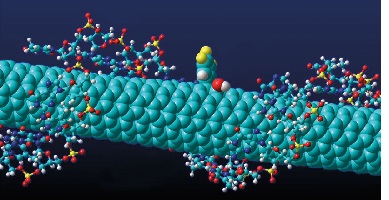 Researchers from Lehigh University, Memorial Sloan Kettering Cancer Center, Weill Cornell Medicine, the University of Maryland, and the National Institute of Standards and Technology have developed a new detection method for ovarian cancer. The approach uses machine learning techniques to efficiently analyze spectral signatures of carbon nanotubes to detect biomarkers of the disease and to recognize the cancer itself. “We wanted to know, could this technology differentiate a blood sample from a patient with ovarian cancer from a patient without ovarian cancer?” said Daniel Heller, one of the scientists involved in this study. The team has shown that their technique can detect ovarian cancer better than the current methods, but it can’t yet identify early stages of the disease. [Illustration courtesy Daniel Heller/MSKCC]
Researchers from Lehigh University, Memorial Sloan Kettering Cancer Center, Weill Cornell Medicine, the University of Maryland, and the National Institute of Standards and Technology have developed a new detection method for ovarian cancer. The approach uses machine learning techniques to efficiently analyze spectral signatures of carbon nanotubes to detect biomarkers of the disease and to recognize the cancer itself. “We wanted to know, could this technology differentiate a blood sample from a patient with ovarian cancer from a patient without ovarian cancer?” said Daniel Heller, one of the scientists involved in this study. The team has shown that their technique can detect ovarian cancer better than the current methods, but it can’t yet identify early stages of the disease. [Illustration courtesy Daniel Heller/MSKCC]
7) Novel gel proves itself to be a highly tunable color filter
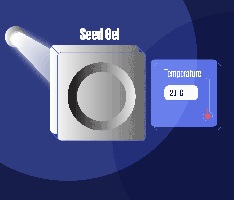 Researchers at the National Institute of Standards and Technology have discovered an unexpected property in a material called "SeedGel": Its temperature determines which color of light can pass through it. In other words, shine white light at the gel, and depending on the gel's temperature, only a specific wavelength, or color, will pass through it. The material begins as a transparent fluid made of water and liquid solvents, with silica nanoparticles added. If this mix is heated to a certain temperature, the liquids and nanoparticles form a physical gel, which initially remains transparent but then its internal structure changes: the liquids form interlocking microscopic channels, with the nanoparticles confined within these channels. “[The gel] is a promising candidate for use in a range of smart optical devices and new classes of materials that have color applications,” said Yuyin Xi, one of the scientists who made this discovery. [Image Credit: N. Hanacek/NIST]
Researchers at the National Institute of Standards and Technology have discovered an unexpected property in a material called "SeedGel": Its temperature determines which color of light can pass through it. In other words, shine white light at the gel, and depending on the gel's temperature, only a specific wavelength, or color, will pass through it. The material begins as a transparent fluid made of water and liquid solvents, with silica nanoparticles added. If this mix is heated to a certain temperature, the liquids and nanoparticles form a physical gel, which initially remains transparent but then its internal structure changes: the liquids form interlocking microscopic channels, with the nanoparticles confined within these channels. “[The gel] is a promising candidate for use in a range of smart optical devices and new classes of materials that have color applications,” said Yuyin Xi, one of the scientists who made this discovery. [Image Credit: N. Hanacek/NIST]
8) New catalyst can turn smelly hydrogen sulfide into a cash cow
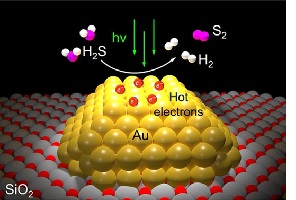 Engineers and scientists from Rice University and Princeton University have discovered a low-energy, one-step photocatalytic method that uses gold nanoparticles to convert the problematic industrial pollutant hydrogen sulfide into valuable hydrogen gas and sulfur. According to the researchers, the remediation process could wind up having low enough implementation costs and high enough efficiency to become economical for cleaning up nonindustrial hydrogen sulfide from sources like sewer gas and animal wastes. “The phrase ‘game-changer’ is overused, but in this case, it applies,” said Naomi Halas, the scientist who led the work. “Implementing plasmonic photocatalysis should be far less expensive than traditional remediation, and it has the added potential of transforming a costly burden into an increasingly valuable commodity.” [Image courtesy of Halas Group/Rice University]
Engineers and scientists from Rice University and Princeton University have discovered a low-energy, one-step photocatalytic method that uses gold nanoparticles to convert the problematic industrial pollutant hydrogen sulfide into valuable hydrogen gas and sulfur. According to the researchers, the remediation process could wind up having low enough implementation costs and high enough efficiency to become economical for cleaning up nonindustrial hydrogen sulfide from sources like sewer gas and animal wastes. “The phrase ‘game-changer’ is overused, but in this case, it applies,” said Naomi Halas, the scientist who led the work. “Implementing plasmonic photocatalysis should be far less expensive than traditional remediation, and it has the added potential of transforming a costly burden into an increasingly valuable commodity.” [Image courtesy of Halas Group/Rice University]
9) Engineers develop nanoparticles that cross the blood-brain barrier
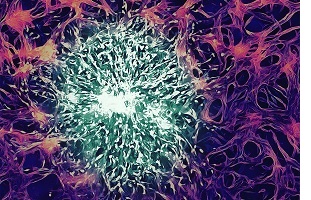 A team of MIT researchers has developed drug-carrying nanoparticles that appear to get into the brain more efficiently than drugs given on their own. Using a human tissue model they designed, which accurately replicates the blood-brain barrier – a barrier between the brain’s blood vessels and brain tissue – the researchers showed that the particles could get into tumors and kill glioblastoma cells. Glioblastoma is an aggressive type of cancer that can occur in the brain or spinal cord. “We are hoping that by testing these nanoparticles in a much more realistic model, we can cut out a lot of the time and energy that’s wasted trying things in the clinic that don’t work,” said Joelle Straehla, one of the MIT scientists who conducted this research. [Image Credit: Cynthia Hajal and Roger D. Kamm (MIT), edited by Chris Straehla]
A team of MIT researchers has developed drug-carrying nanoparticles that appear to get into the brain more efficiently than drugs given on their own. Using a human tissue model they designed, which accurately replicates the blood-brain barrier – a barrier between the brain’s blood vessels and brain tissue – the researchers showed that the particles could get into tumors and kill glioblastoma cells. Glioblastoma is an aggressive type of cancer that can occur in the brain or spinal cord. “We are hoping that by testing these nanoparticles in a much more realistic model, we can cut out a lot of the time and energy that’s wasted trying things in the clinic that don’t work,” said Joelle Straehla, one of the MIT scientists who conducted this research. [Image Credit: Cynthia Hajal and Roger D. Kamm (MIT), edited by Chris Straehla]
TOP 9 POPULAR PODCAST EPISODES
In 2022, the National Nanotechnology Coordination Office invited guest scientists and engineers from the nanotechnology community to talk about their research in podcast interviews led by the former Director of NNCO, Lisa Friedersdorf. We looked at the number of times these podcast interviews were downloaded and compiled a list of the Top 9 most downloaded podcast interviews, which we present below.
1) Dan Nocera (Harvard University)
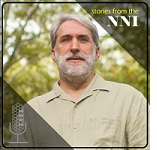 Dan Nocera, the Patterson Rockwood Professor of Energy at Harvard University, describes how he and his team have developed a nanostructured device, called an artificial leaf, which works like a leaf by using sunlight to split water into hydrogen and oxygen; then, the hydrogen can be used to generate renewable fuel. “In the next 35 years, believe it or not, you will have 6 billion new energy users [on] the planet,” Nocera said. “The question for us is ‘How can I use any resource that anybody – whether you’re rich or poor – would have access to, and then, basically invent around [these resources] an energy ecosystem effectively?’“
Dan Nocera, the Patterson Rockwood Professor of Energy at Harvard University, describes how he and his team have developed a nanostructured device, called an artificial leaf, which works like a leaf by using sunlight to split water into hydrogen and oxygen; then, the hydrogen can be used to generate renewable fuel. “In the next 35 years, believe it or not, you will have 6 billion new energy users [on] the planet,” Nocera said. “The question for us is ‘How can I use any resource that anybody – whether you’re rich or poor – would have access to, and then, basically invent around [these resources] an energy ecosystem effectively?’“
2) Thomas Epps (University of Delaware)
 Thomas Epps, III, the Allan and Myra Ferguson Distinguished Professor of Chemical and Biomolecular Engineering at the University of Delaware, discusses his work developing sustainable, high-performance polymers from lignin, an organic compound present in plants. “One of the key structural components that is in most plant matter is lignin,” Epps said. “That material is considered a recalcitrant waste and so it’s burned or thrown away in the landfill. One of the things we’ve been particularly interested in is, ‘Can we break that material down in an economic and more environmentally friendly fashion so that we can use products from that lignin to make polymers?’ What we found is that we’re actually able to use our knowledge of chemical engineering and catalytic processes to deconstruct that lignin and use that without a lot of separations to make monomers and polymers in an efficient fashion.”
Thomas Epps, III, the Allan and Myra Ferguson Distinguished Professor of Chemical and Biomolecular Engineering at the University of Delaware, discusses his work developing sustainable, high-performance polymers from lignin, an organic compound present in plants. “One of the key structural components that is in most plant matter is lignin,” Epps said. “That material is considered a recalcitrant waste and so it’s burned or thrown away in the landfill. One of the things we’ve been particularly interested in is, ‘Can we break that material down in an economic and more environmentally friendly fashion so that we can use products from that lignin to make polymers?’ What we found is that we’re actually able to use our knowledge of chemical engineering and catalytic processes to deconstruct that lignin and use that without a lot of separations to make monomers and polymers in an efficient fashion.”
3) Tod Pascal (University of California, San Diego)
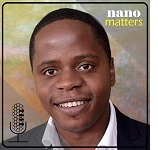 Tod Pascal, Assistant Professor of NanoEngineering and Chemical Engineering at the University of California, San Diego, discusses his work on improving the performance of batteries by using various nanomaterials. “We’re really interested in current and next-generation battery technologies and how we could engineer new systems that are required for some of our most pressing energy needs,” Pascal said. “There are people working on all aspects of the battery, whether it is safety, how many times you can recharge it, [or] improving how much charge you can store in it.”
Tod Pascal, Assistant Professor of NanoEngineering and Chemical Engineering at the University of California, San Diego, discusses his work on improving the performance of batteries by using various nanomaterials. “We’re really interested in current and next-generation battery technologies and how we could engineer new systems that are required for some of our most pressing energy needs,” Pascal said. “There are people working on all aspects of the battery, whether it is safety, how many times you can recharge it, [or] improving how much charge you can store in it.”
4) Nanshu Lu (University of Texas at Austin)
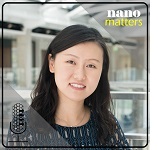 Nanshu Lu, Associate Professor in the Department of Aerospace Engineering and Engineering Mechanics at the University of Texas at Austin, discusses her work using nanotechnology to design wear-and-forgettable biosensors that can monitor a person’s health. “Wearable sensors are really just any kind of sensor that picks up electrical, mechanical, thermal, and even chemical signals from the surface of the skin in a non-invasive manner,” Lu said. “E-tattoos are hair-thin, skin-soft wearable patches that can be adhered to human skin. Like a temporary tattoo sticker, they are highly multifunctional and wear-and-forgettable, and can wirelessly stream real-time vital signs to our smartphones.”
Nanshu Lu, Associate Professor in the Department of Aerospace Engineering and Engineering Mechanics at the University of Texas at Austin, discusses her work using nanotechnology to design wear-and-forgettable biosensors that can monitor a person’s health. “Wearable sensors are really just any kind of sensor that picks up electrical, mechanical, thermal, and even chemical signals from the surface of the skin in a non-invasive manner,” Lu said. “E-tattoos are hair-thin, skin-soft wearable patches that can be adhered to human skin. Like a temporary tattoo sticker, they are highly multifunctional and wear-and-forgettable, and can wirelessly stream real-time vital signs to our smartphones.”
5) Ange-Therese Akono (Northwestern University)
 Ange-Therese Akono, Assistant Professor of Civil and Environmental Engineering at Northwestern University, discusses how she and her team use various nanomaterials to prevent concrete from cracking, which could make it stronger and more durable. “The large cracks that we can see, for instance, in the pavement, actually started as a breaking of atoms,” Akono said. “If we can understand how [a crack] is propagating and how that propagation is influenced by the chemistry, the environment, or the microstructures [in concrete], then we can do some type of reverse engineering and prevent [the crack] from propagating.”
Ange-Therese Akono, Assistant Professor of Civil and Environmental Engineering at Northwestern University, discusses how she and her team use various nanomaterials to prevent concrete from cracking, which could make it stronger and more durable. “The large cracks that we can see, for instance, in the pavement, actually started as a breaking of atoms,” Akono said. “If we can understand how [a crack] is propagating and how that propagation is influenced by the chemistry, the environment, or the microstructures [in concrete], then we can do some type of reverse engineering and prevent [the crack] from propagating.”
6) Juan Pablo Giraldo (University of California, Riverside)
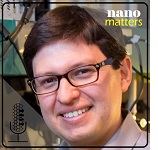 Juan Pablo Giraldo, Associate Professor in the Department of Botany and Plant Sciences at the University of California, Riverside, describes his work using nanotechnology to turn plants into sensing and biomanufacturing devices. “Plants cannot tell us when they are healthy or when they are experiencing stress,” Giraldo said. “The nanosensors we are developing in my lab can allow these plants to communicate with electronic devices and report their health status by changing the fluorescence or light intensity of the sensors, and then a camera can record that and report it to a computer. The computer, in turn, can [tell] the user or the owner of those plants that the plants need some help to alleviate that stress.
Juan Pablo Giraldo, Associate Professor in the Department of Botany and Plant Sciences at the University of California, Riverside, describes his work using nanotechnology to turn plants into sensing and biomanufacturing devices. “Plants cannot tell us when they are healthy or when they are experiencing stress,” Giraldo said. “The nanosensors we are developing in my lab can allow these plants to communicate with electronic devices and report their health status by changing the fluorescence or light intensity of the sensors, and then a camera can record that and report it to a computer. The computer, in turn, can [tell] the user or the owner of those plants that the plants need some help to alleviate that stress.
7) Beth Stadler (University of Minnesota)
 Beth Stadler, Professor and Associate Head of Electrical and Computer Engineering at the University of Minnesota, discusses her work using nanotechnology to improve the preservation of organs for transplantation. “If you have, for example, a heart that is donated – normally it’s from an accident – this transfer has to happen within about four hours; otherwise, the heart is not viable,” Stadler said. “If we could harvest the organ at the accident site and freeze it, we could also study the immune signals and make sure that it’s a good match for this recipient. Also, then, the organ could go wherever the best match is.”
Beth Stadler, Professor and Associate Head of Electrical and Computer Engineering at the University of Minnesota, discusses her work using nanotechnology to improve the preservation of organs for transplantation. “If you have, for example, a heart that is donated – normally it’s from an accident – this transfer has to happen within about four hours; otherwise, the heart is not viable,” Stadler said. “If we could harvest the organ at the accident site and freeze it, we could also study the immune signals and make sure that it’s a good match for this recipient. Also, then, the organ could go wherever the best match is.”
8) Chinedum Osuji (University of Pennsylvania)
 Chinedum Osuji, the Eduardo D. Glandt Presidential Professor in the Department of Chemical and Biomolecular Engineering at the University of Pennsylvania, discusses his work developing nanostructured polymer membranes for a variety of applications, including water purification, battery improvement, and chemical separation. “We have a strong and persistent interest in controlling the nanostructure of polymers, understanding how we can do that, and then using the resulting materials in applications where we think we can make a difference,” Osuji said.
Chinedum Osuji, the Eduardo D. Glandt Presidential Professor in the Department of Chemical and Biomolecular Engineering at the University of Pennsylvania, discusses his work developing nanostructured polymer membranes for a variety of applications, including water purification, battery improvement, and chemical separation. “We have a strong and persistent interest in controlling the nanostructure of polymers, understanding how we can do that, and then using the resulting materials in applications where we think we can make a difference,” Osuji said.
9) Sherine Obare (Joint School of Nanoscience and Nanoengineering)
 Sherine Obare, the Dean of the Joint School of Nanoscience and Nanoengineering at the North Carolina Agricultural and Technical State University and the University of North Carolina at Greensboro, discusses her work using nanomaterials to develop highly sensitive sensors that detect contaminants in the environment. “If you have a messy environment, as all environments are, how can you tell if you have more than one type of contaminant or two?” Obare said. “We want to be able to distinguish them, and we also want to be able to have signals that enable us to understand how much [contaminant there is], even if it’s in an extremely small quantity.”
Sherine Obare, the Dean of the Joint School of Nanoscience and Nanoengineering at the North Carolina Agricultural and Technical State University and the University of North Carolina at Greensboro, discusses her work using nanomaterials to develop highly sensitive sensors that detect contaminants in the environment. “If you have a messy environment, as all environments are, how can you tell if you have more than one type of contaminant or two?” Obare said. “We want to be able to distinguish them, and we also want to be able to have signals that enable us to understand how much [contaminant there is], even if it’s in an extremely small quantity.”


